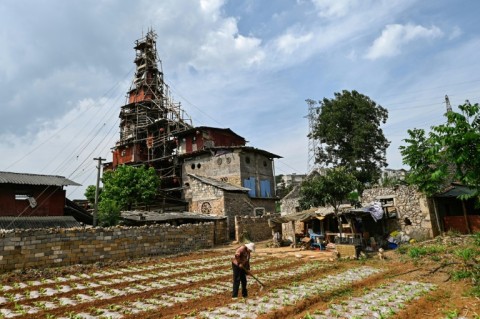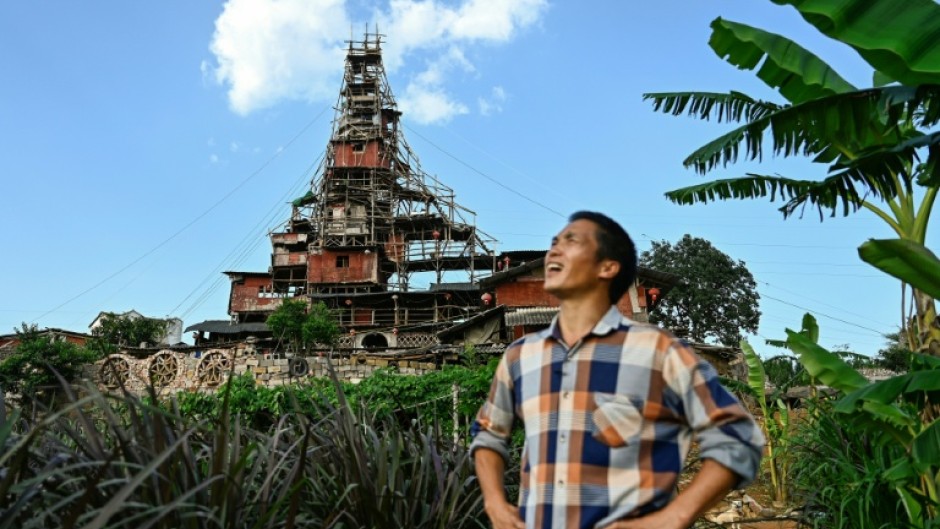BEIJING - Surrounded by the rubble of demolished homes, Chen Tianming's ramshackle tower of faded plyboards and contorted beams juts into the sky in southwestern China, a teetering monument to one man's stubbornness.
Authorities razed most of Chen's village in Guizhou province in 2018 to build a lucrative tourist resort in a region known for its spectacular rice paddies and otherworldly mountain landscapes.
Chen refused to leave, and after the project faltered, defied a flurry of demolition notices to build his family's humble stone bungalow higher and higher.
He now presides over a bewildering 10-storey, pyramid-shaped warren of rickety staircases, balconies and other add-ons, drawing comparisons in Chinese media to the fantastical creations of legendary Japanese animator Hayao Miyazaki.
"I started building out of practicality, trying to renovate and expand our home," Chen told AFP on a sweltering May afternoon as he climbed ladders and ducked wooden beams in his labyrinthine construction.
"But then it became more of an interest and hobby that I enjoyed," he said.

Chen's obsessive tinkering and lack of building permits continue to draw ire from the local government.
The higher floors where he sleeps sway in the wind, and dozens of ropes and cables tether the house to the ground as if the whole thing might one day float away.
"When I'm up here... I get the sense of being a nomad," Chen said, gazing out at apartment blocks, an airport and distant mountains.
"People often say it's unsafe and should be demolished... but I'll definitely never let anyone tear it down."
In recent years, ironically, Chen's house has begun to lure a steady trickle of tourists itself.
On Chinese social media, users describe it as China's strangest nail house, likening it to the madcap buildings in Miyazaki's Studio Ghibli masterpieces "Howl's Moving Castle" and "Spirited Away".

